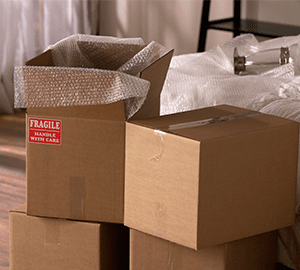GET PACKING TIPS IN TENNESSEE FROM THE EXPERTS AT A.M. P.M. MOVERS
GET PACKING TIPS IN TENNESSEE FROM THE EXPERTS AT A.M. P.M MOVERS
A.M. P.M. Movers includes packing services as a part of our full-service moves—but we also know everyone likes saving money. How? Consider doing your own packing.
Do-it-yourself packing is a big job, but it can be a worthwhile way to save money on your relocation costs. With the right materials and a little help from AM PM Movers you’ll achieve professional results and protect your possessions.
With this in mind, here are some general packing tips for Tennessee or longer-distance moves.

PREPARATION
Start with professional materials:
When it comes to professional-standard boxes, A.M. P.M. has just what you need:
- Dish pack: Heavy-duty carton for dishes/china, crystal and glassware
- Double-wall: Extra-protective cartons for fine china, crystal, and other high-value, hard-to-replace items
- 1.5 cu. ft. cartons: For heavy items such as books, files, music CDs and DVDs/video tapes
- 3.0 cu. ft. cartons: Often used for pots and pans, toys, and small appliances
- 4.5 cu. ft. cartons: For bulky items, such as linens, towels or toys
- 6.0 cu. ft. cartons: For large, bulky, or lightweight articles, such as pillows or large lampshades
- Wardrobe cartons: A portable closet that keeps clothes or draperies hanging on a built-in bar
- Mirror cartons: Several sizes of telescoping cartons for framed pictures, mirrors or glass
- Mattress cartons: Available in queen/king, double, single, twin, and crib sizes. Use a separate carton for box springs
- Stretch wrap: A special plastic covering that safely adheres to furniture and protects it from snags, tears, and dirt
Contact
your AM PM Movers about materials available for purchase. Use newspaper for cushioning only; never place printed paper against items, as the ink will rub off. It can get embedded in fine china, so be wary!
Call A.M. P.M. Movers, home of the best packing tips in Tennessee or anywhere else. We’re ready to answer your questions today at 1 (800) 560-1215
or via our convenient contact form.
